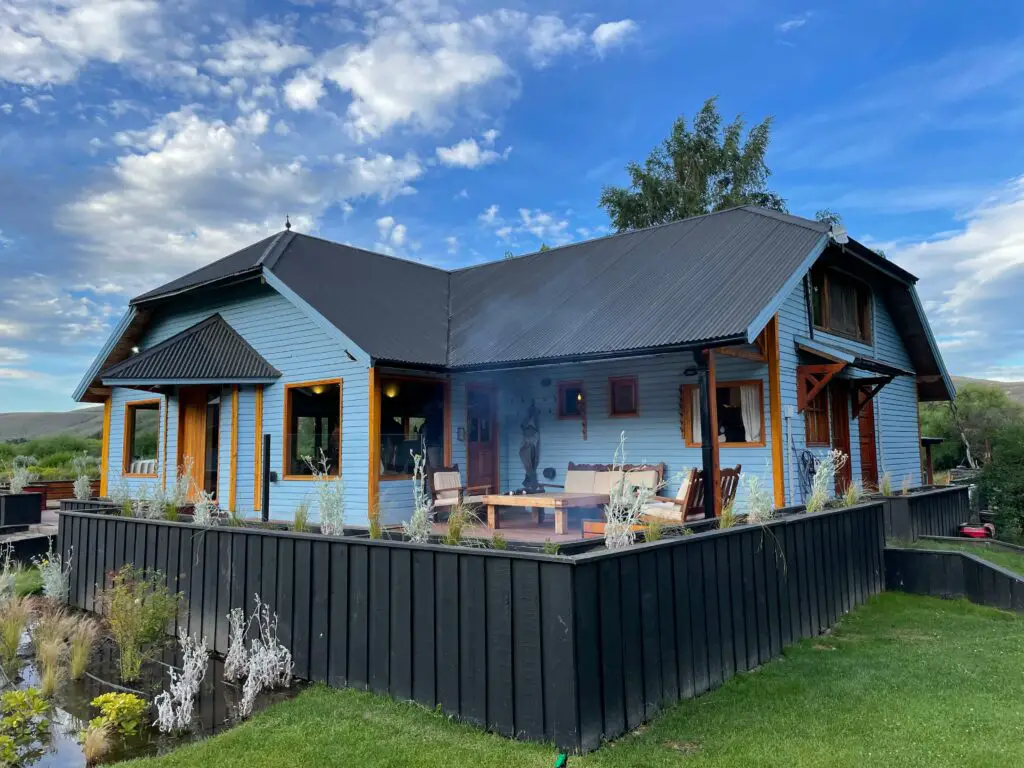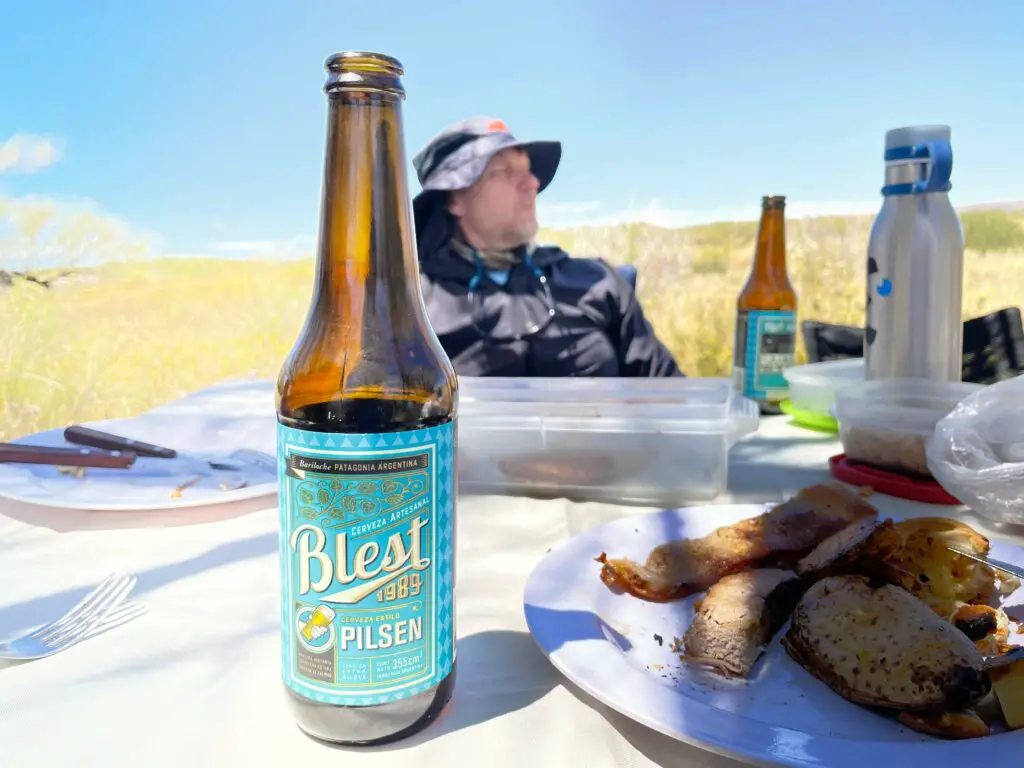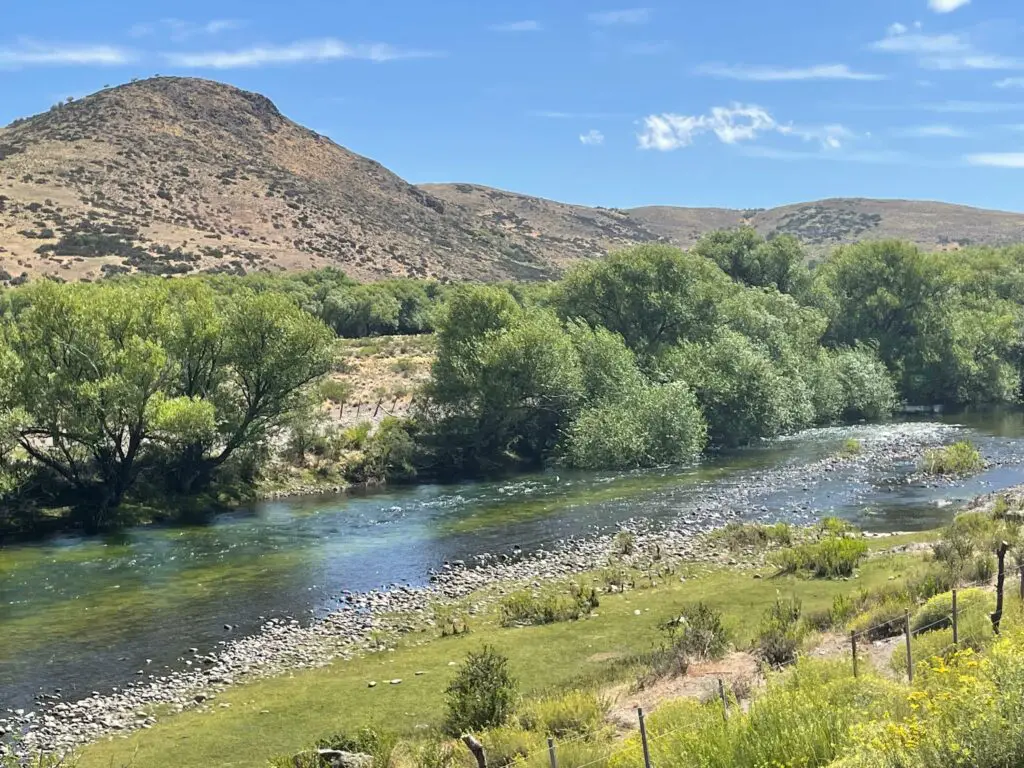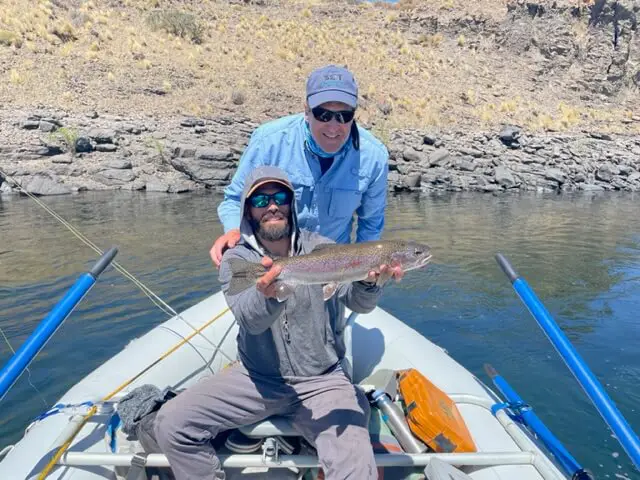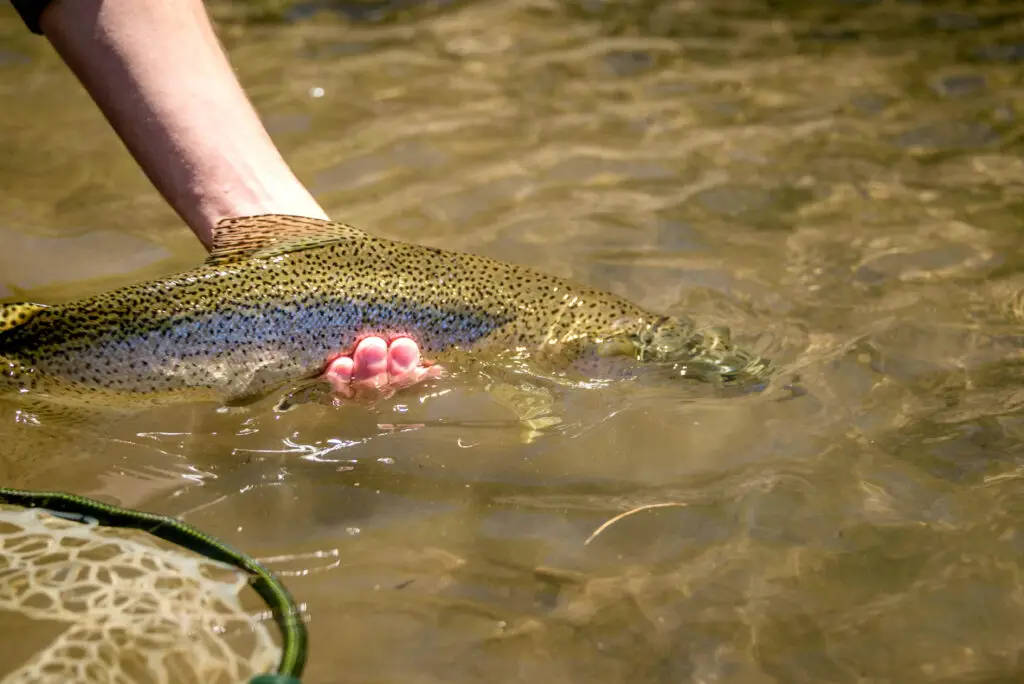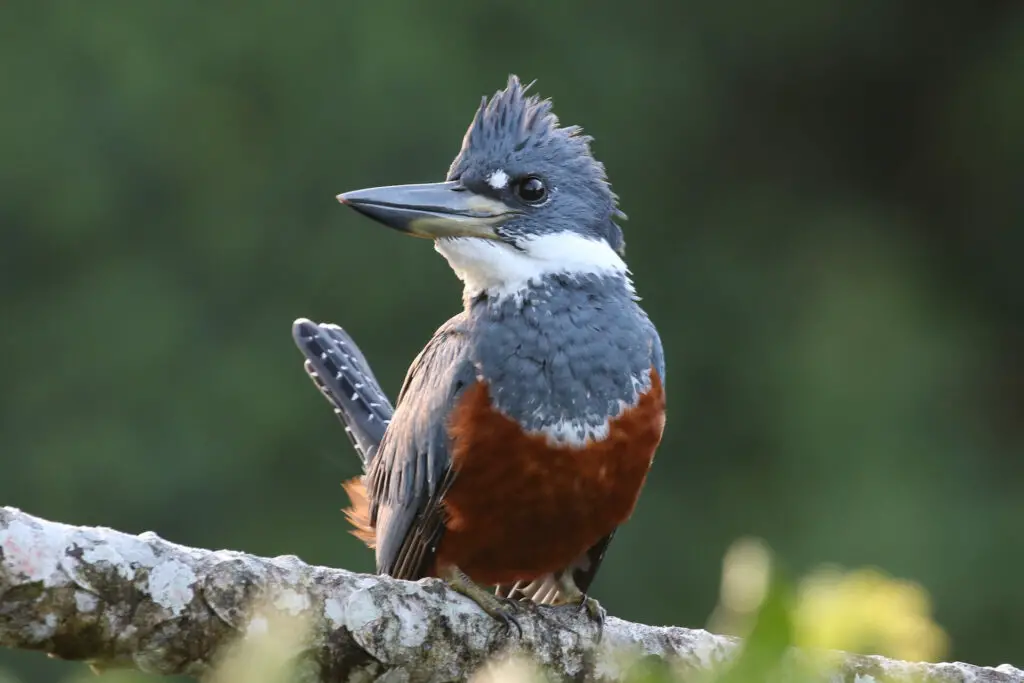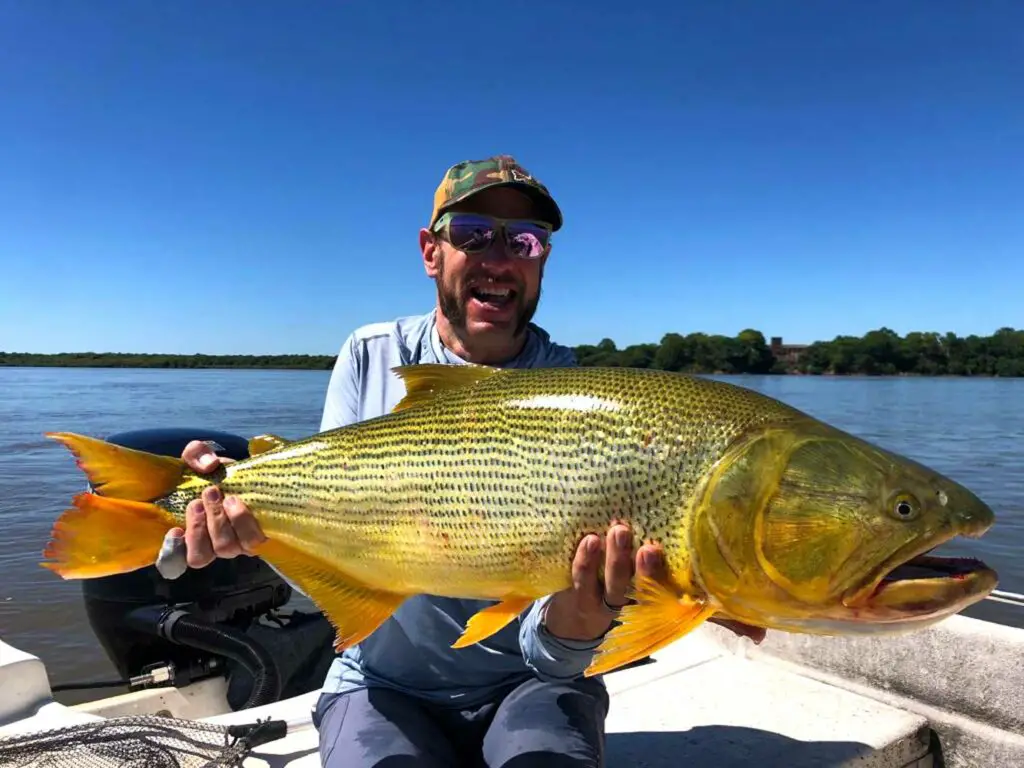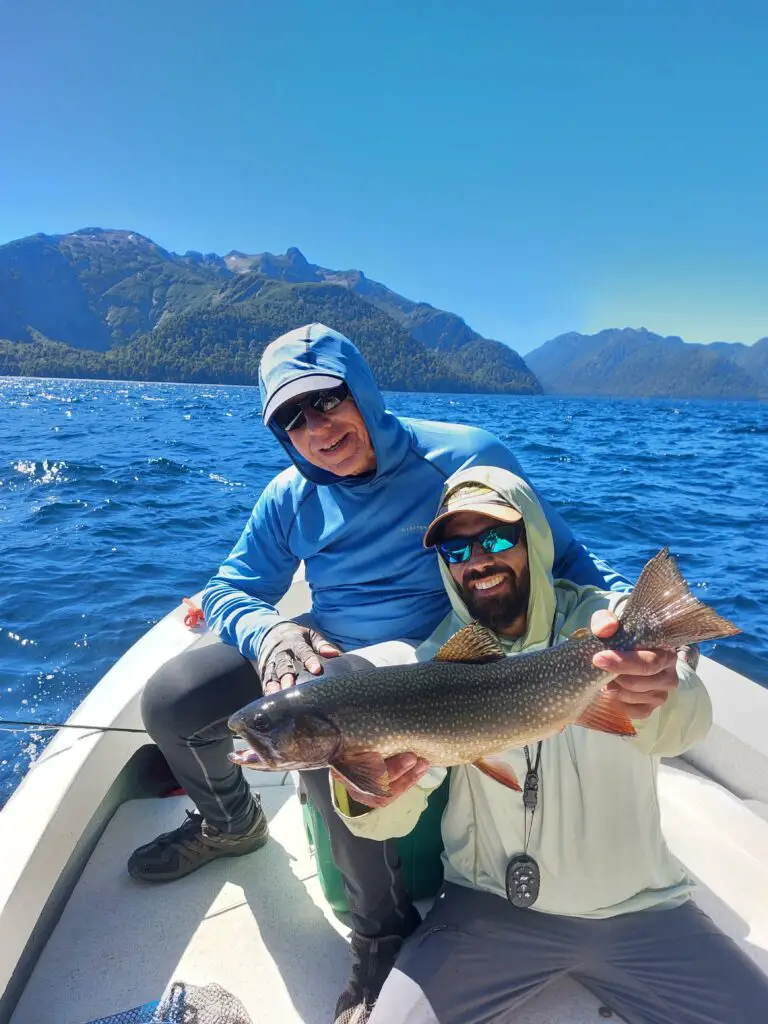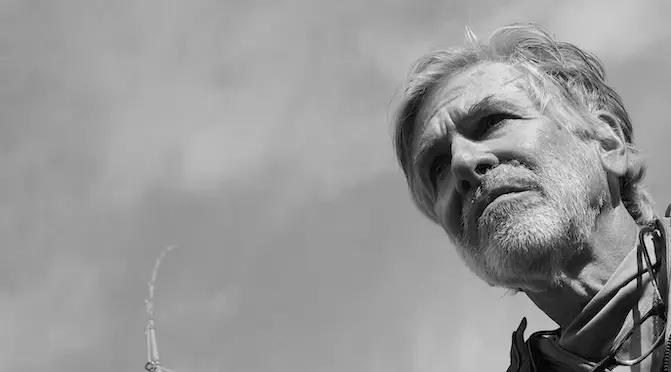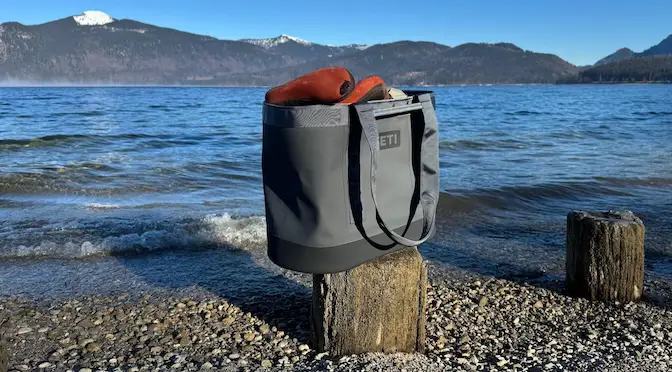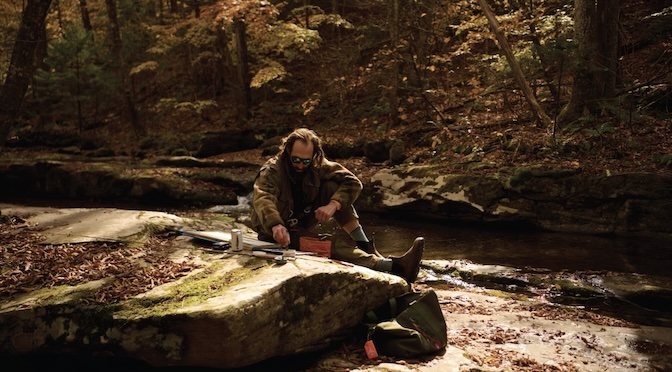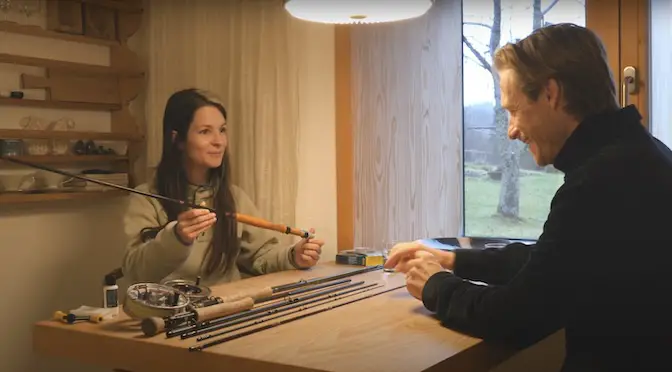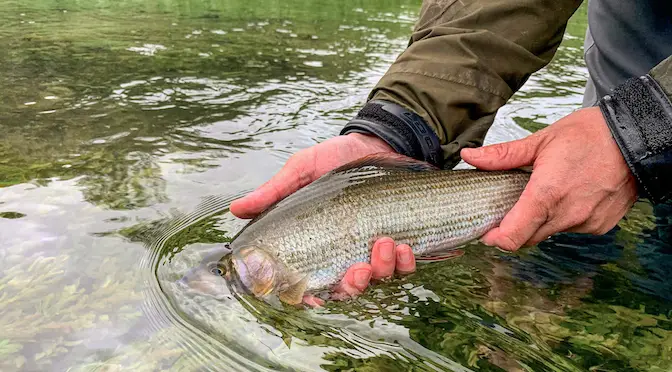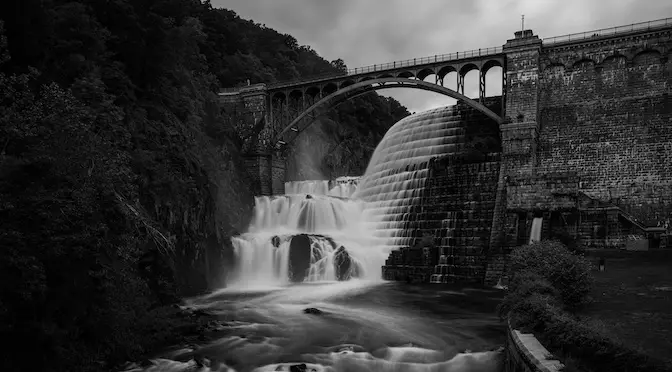Last updated on January 9th, 2024.
- Wrangler Duo Key to Wyoming Wilderness Adventure - October 1, 2024
- A Guide to the Best Flies for the Driftless Area - May 6, 2024
- Spring Creek Lodge Argentina: A Five Star Experience - November 27, 2023
I bought my first fly rod and reel at age 12.
I put the two-piece 7’ 6” Shakespeare fiberglass rod and Pflueger reel across my bike’s handlebars and rode to a pond a couple miles away to catch bluegill sunfish.
On January 5, 2023, I traveled a little farther—almost 6,000 miles—with a more expensive Orvis 5-
weight RECON graphite fly rod and Battenkill reel to fish for trout in the northern Patagonia region
of San Martin and Junín de los Andes.
I signed up for the seven-day, six-night trout Spring Creek trout fly fishing program offered by SET Fly Fishing through Mat Wagner and wife Geri Meyer—co-owners of the Driftless Angler fly shop and guide service in Viroqua, Wisconsin—who I’ve known for years through my involvement with Chicago’s largest Trout Unlimited chapter and annual fishing trips to the Driftless Area.
SET Fly Fishing Program Overview
SET Fly Fishing is a seven-year-old business comprised of three lodges offering distinct fly fishing experiences in Argentina’s Patagonia region for trout based on different geography, rivers and lakes, species and experiences. They also own two lodges dedicated to pursuing golden Dorado near the Ibera wetlands region of northern Argentina. While Set Fly Fishing has been operating under its new name for seven years, management and its core staff have been running Patagonia fly fishing programs and lodges for over 20 years.
Mat and Geri first met Gustavo Hiebaum, SET Fly Fishing Partner and Operational Manager, in 2016 during their first trip to the Spring Creek Lodge when it was owned by Andes Drifters and Hiebaum. Mat and Geri were blown away not only by the Patagonia fishery, but also the high level of hospitality and customer service provided by Hiebaum’s staff.
When Hiebaum merged Andes Drifters with the Parana on the Fly lodge in 2020 to form SET Fly Fishing, Mat and Geri agreed to offer four seven-day trips annually for 10 anglers to Argentina— two programs for rainbow, brook and brown trout and two for golden Dorado. Mat and Geri have been filling their hosted trips with clients who learn about these fly fishing adventures from the Driftless Angler website and mailing list emails. As an added feature, Mat and Geri personally accompany their guests during each one-week program and arrange all airport transfers.
Getting to Spring Creek Lodge required travel from Chicago through Miami to Buenos Aires. There was no Covid test or special paperwork requirement to enter the country—just my passport. Traveling to Buenos Aires was no different than traveling to post-Covid Europe compared to the multi-layered Covid obstacle course I had to traverse to fish Chile’s Lago Yelcho in March 2022. My Miami 10-hour flight arrived at the Buenos Aires International Airport at 9 am local time which was one hour ahead of the U.S. Eastern time zone. Mat and Geri met our group at the airport and arranged our transfer to a centrally located hotel in Buenos Aires for a one-night stay before heading north the next day to San Martin.
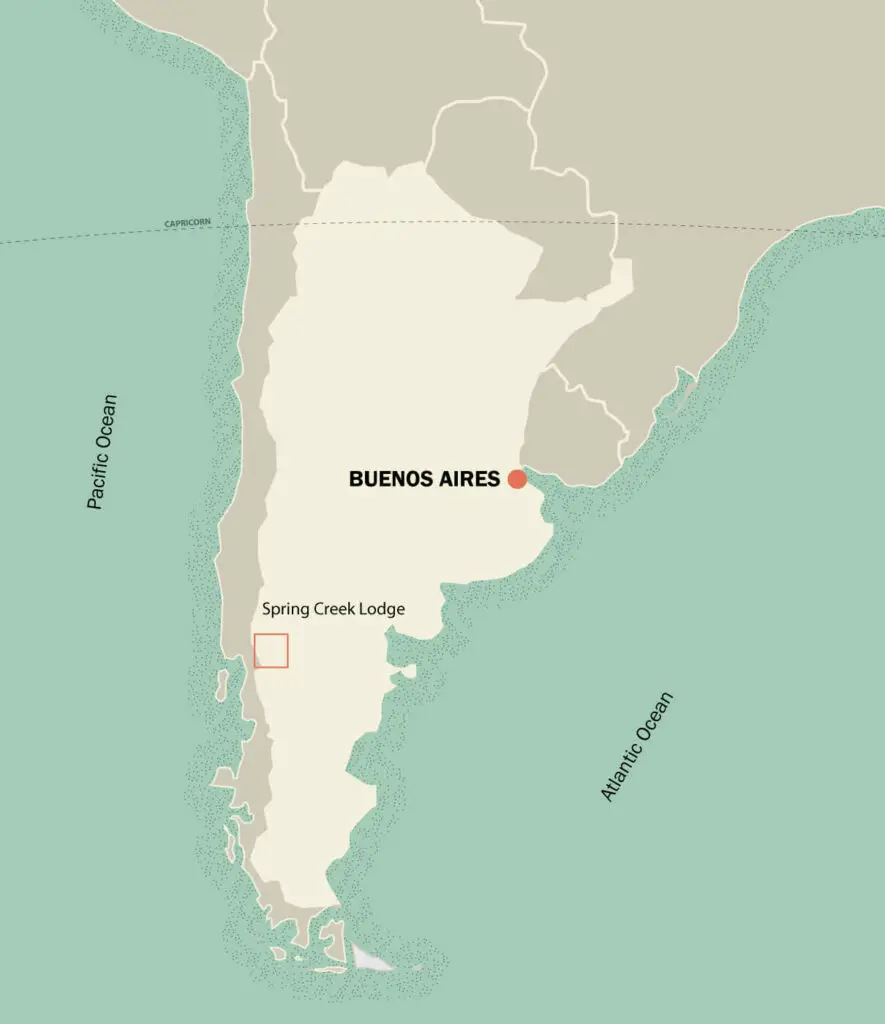
After hotel check in, Mat and Geri hosted our nine-person group for lunch and arranged a 2.5 hour afternoon private tour of historic Buenos Aires which was a nice touch. A relaxing dinner concluded our first day in Argentina.
For dinner I ordered a ribeye steak which seemed appropriate since Argentina is famous for its beef, ranking second in the world in annual consumption. I was reminded of an Anthony Bourdain TV episode on dining in meat-centric Buenos Aires. As a self-admitted carnivore, I would not be disappointed with the SET Fly Fishing menu for the next week, although they were able to modify their menu for one member of our group.
January weather in Argentina is like our U.S. Midwest mid-summer with temperatures in the low
80s with lots of sunshine. It was a welcome change from my Chicago winter which was another
good reason to schedule this trip.
Day One—Spring Creek Lodge Arrival
To get to San Martin we headed to the Buenos Aires older city airport for the two-hour flight. Of special note, the local airline prohibits carry-on rods and reels with line. I guess the local airline is concerned about someone getting strangled with a 5-weight floating fly line. Upon arrival, we were met at the San Martin airport by the SET Fly Fishing staff for the 30-minute drive to the Spring Creek Lodge.
Located on the banks of the upper Chimehuin River, Spring Creek Lodge consists of a main building for daily casual breakfast and formal dinners and six two-bedroom cabanas with a shared bathroom, living room and outdoor porch. The lodge has a large fire pit with seating for nighttime gatherings under the southern stars if you aren’t ready for bedtime after a long day of fishing, cocktails and late dinners.
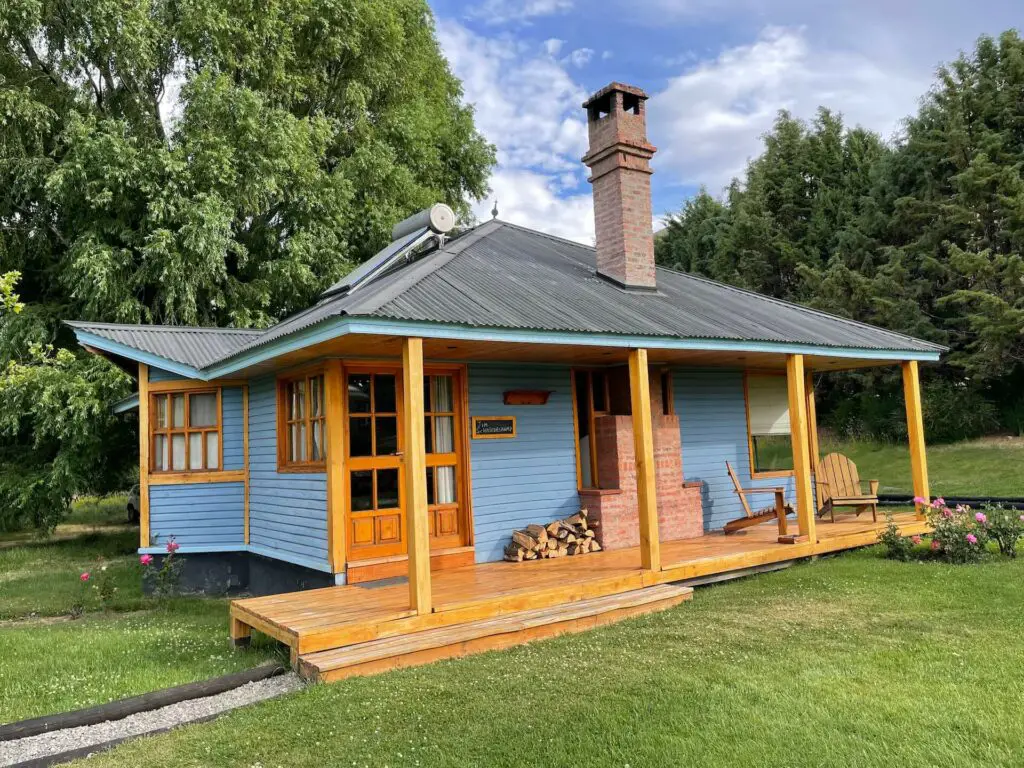
two-bedroom cabanas.
After checking into our assigned cabana, we gathered for an Argentina Malbec wine tasting hosted
by Gustavio Hiebaum followed by the first of many five-star dinners prepared by chef Frederico and
his staff. Frederico traveled and worked internationally in various restaurants before joining the
Spring Creek Lodge team in 2008.
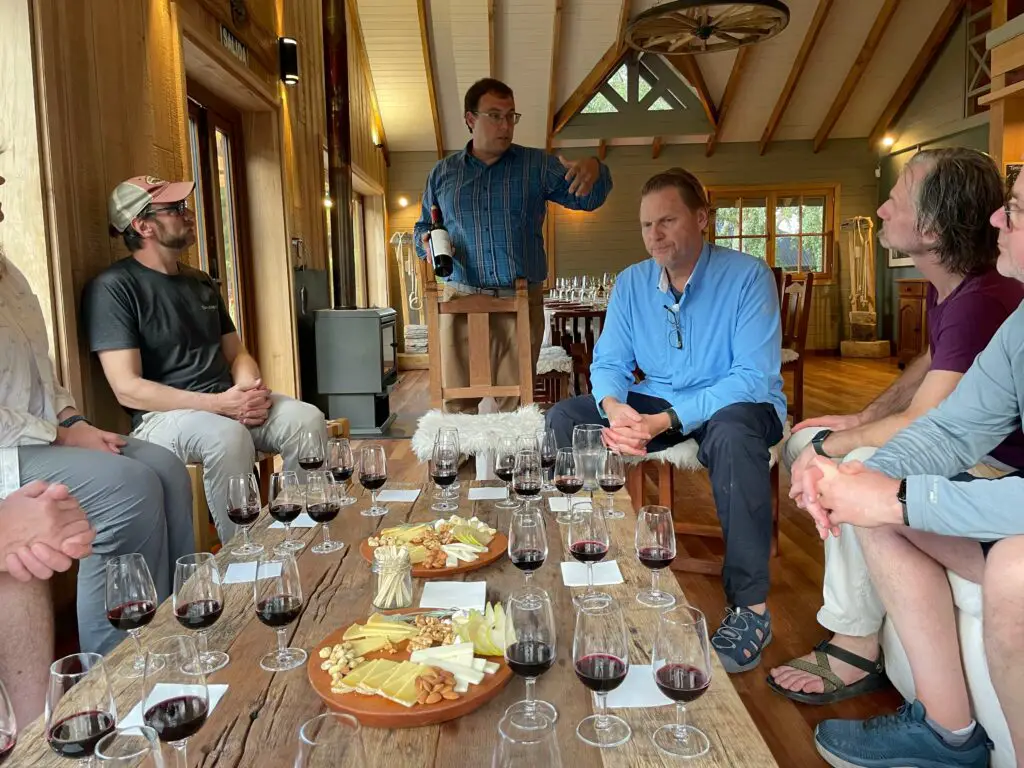
the first of many five-star dinners. (Photo by Jim Schmiedeskamp)
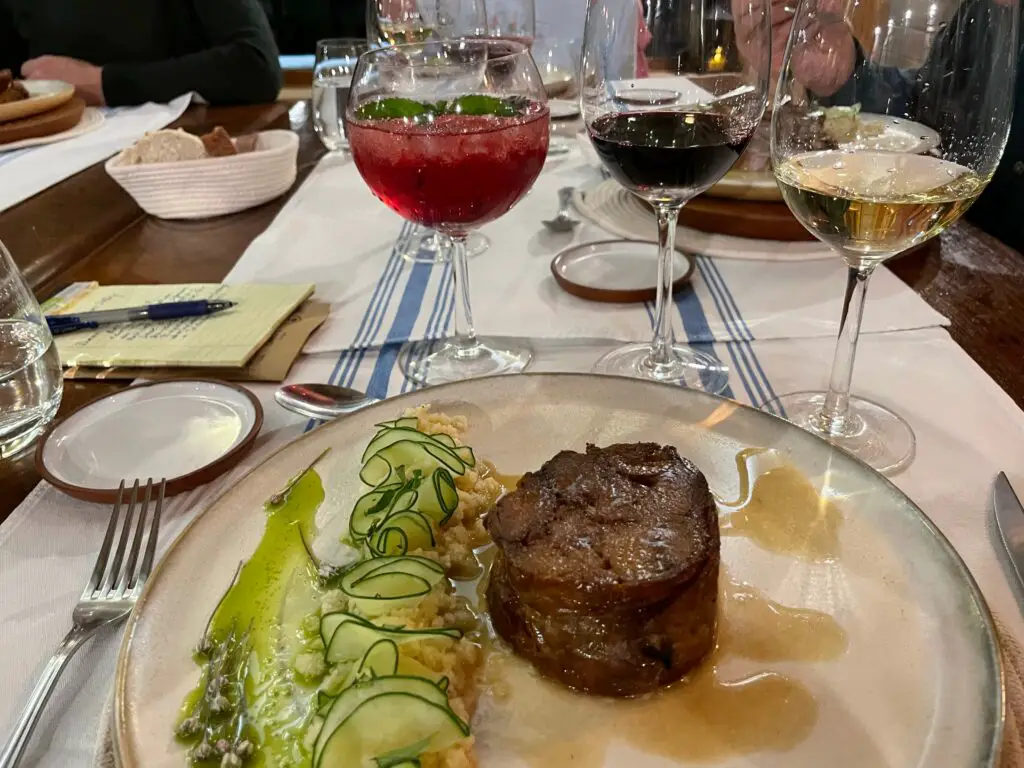
Jim Schmiedeskamp)
The two-bedroom cabanas were spacious with a main room featuring casual seating, dining table and kitchen. Other than sleeping and showering, I hardly spent any time in my cabana as our days were full of fishing followed by evening cocktails and dinner at the main building. We met our guides each morning after breakfast ready to depart at 8:30 am and returned usually by 8 pm.
Dinner typically was served around 9 pm preceded by cocktails which featured a lodge specialty— local gin and a Malbec reduction with tonic water on ice with a dried orange slice and touch of fresh mint.
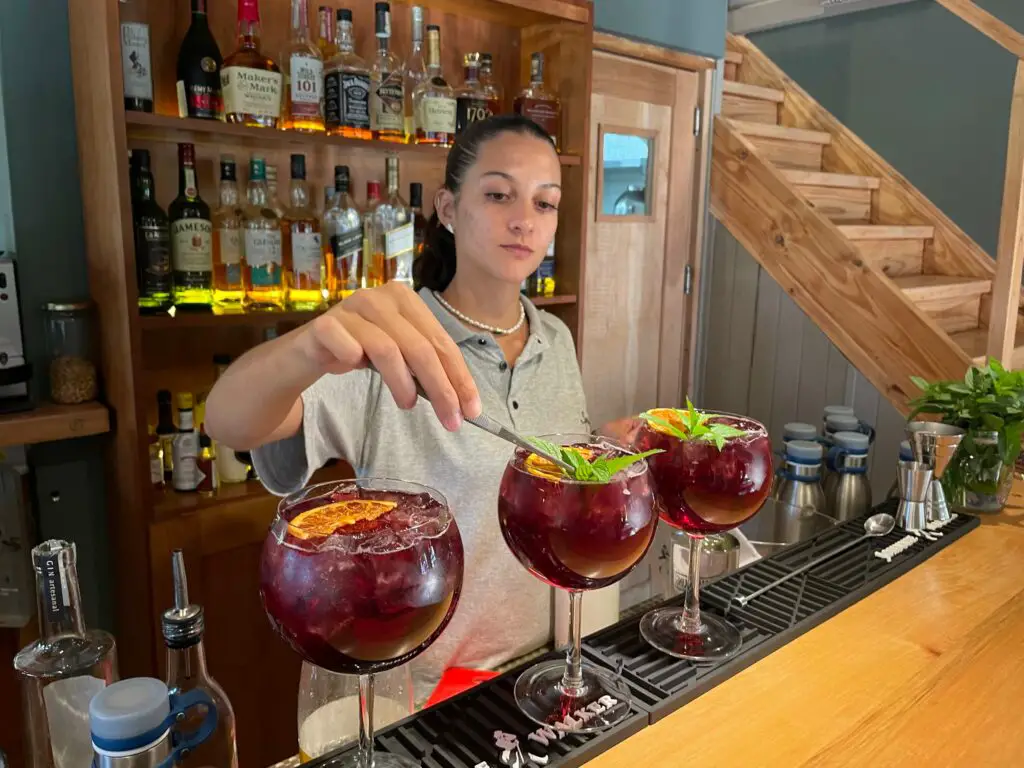
Malbec reduction. (Photo by Jim Schmiedeskamp)
The Patagonia topography reminded me of Colorado’s and Wyoming’s high desert with treeless shrub and grass steppes that give way to dwarf-shrub semi-deserts in the drier areas of the central plateaus.
Our group split up each day with three or four anglers heading to a different location. On only one day did we come across anglers from another area lodge. We typically spent about an hour getting to each different daily fishing destination with a two-day overnight camping float trip being an exception.
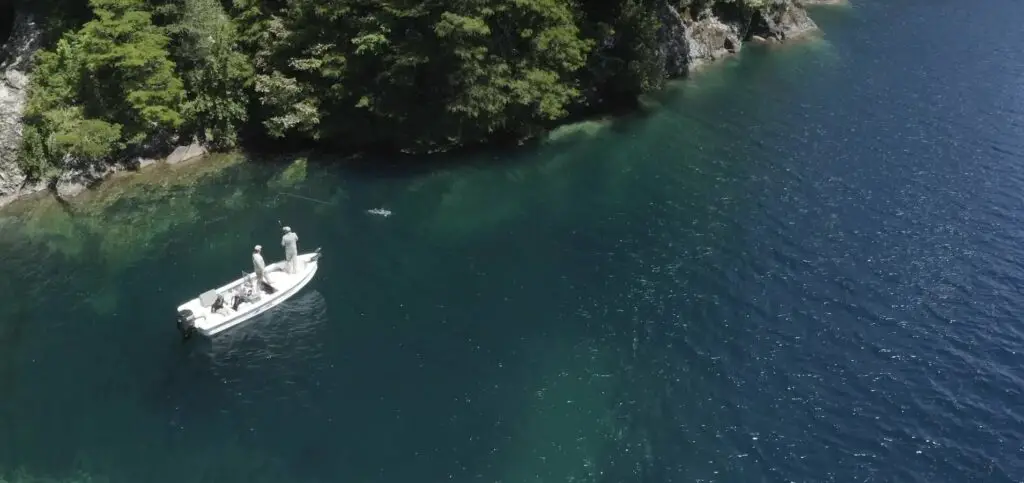
border with Chile. (Photo courtesy of SET Fly Fishing)
Day Two—Lake Tromen Grand Slam
For my first day of fishing, we headed to Lake Tromen which is located at the base of the Lanin Volcano about 60 miles from the lodge and near the border with Chile.
This beautiful lake is nestled among the eastern front range of the Andes and is the source of the Malleo River. Rainbows and browns range in size from 15-24 inches, with brook trout running 15 to 20 inches.
We used a powerboat, initially sight fishing to large fish near fallen logs, rocky cliffs, shoals and reed beds. The trout are constantly cruising the shoreline to feed on terrestrials that fall from the trees and are blown into the water by the wind. This presents anglers with the special opportunity to fish with dry flies matching the terrestrials.
I started out sight fishing with a 5-weight outfit and casting in clear, calm shallow water to structures looking for cruising trout with a Fat Albert foam body. However, with no wind, finicky trout were able to carefully inspect my offering and reject it. I was finally able to hook up a few rainbows in deeper water and along some reed beds using a dragonfly imitation more as an attractor since there was no dragonfly hatch activity that day.
After lunch, we headed out to more open water and fished off a point with streamers which were the right choice for a 21-inch brown and several brook trout, including a 16-incher which was the largest brookie I’ve caught. Afternoon winds caused me to switch to a 6-weight outfit.
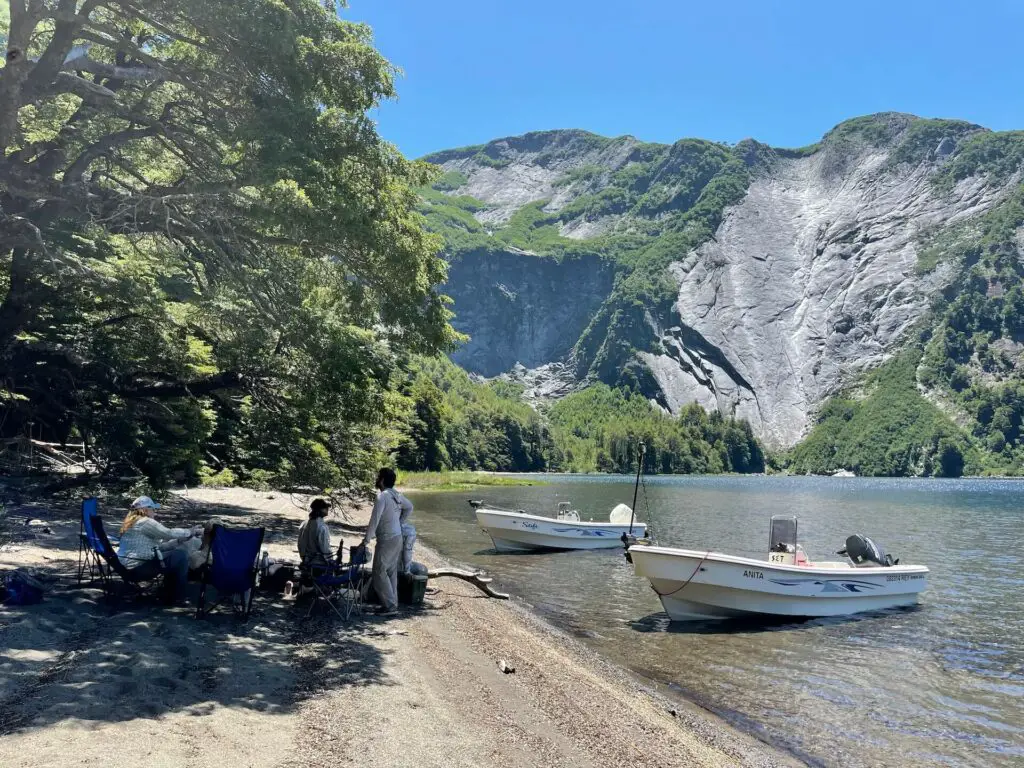
Tromen to ourselves. (Photo by Jim Schmiedeskamp)
I was able to net the Lake Tromen grand slam featuring my large brown, several 18-inch rainbows
and the largest brook trout I’ve ever caught. The only other anglers I saw on Lake Tromen were in
the second SET Fly Fishing boat when we met for lunch.
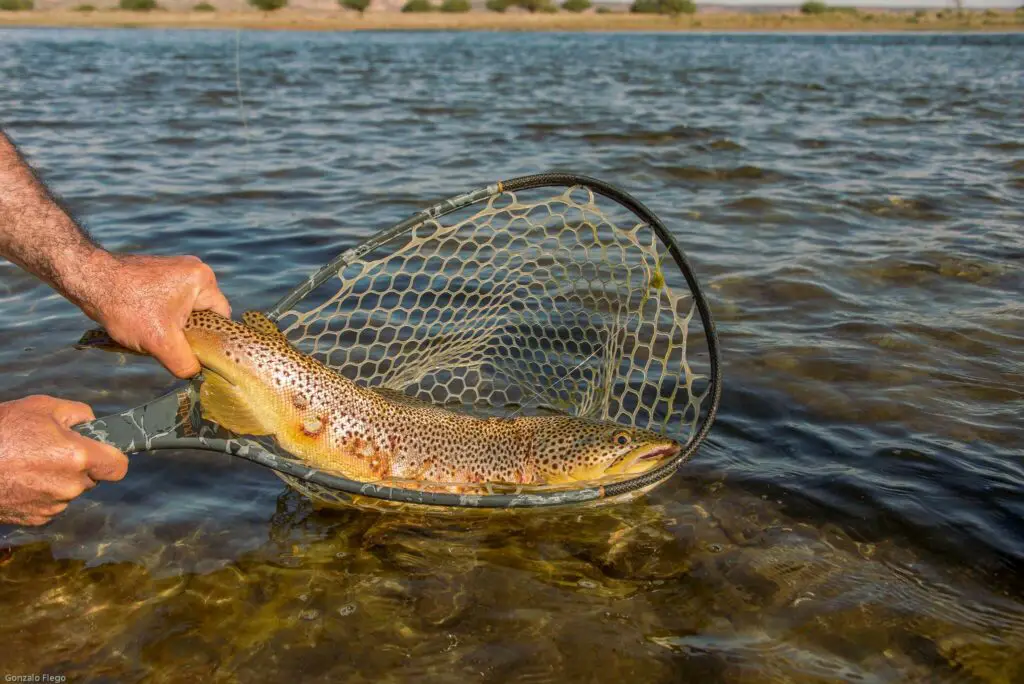
of SET Fly Fishing)
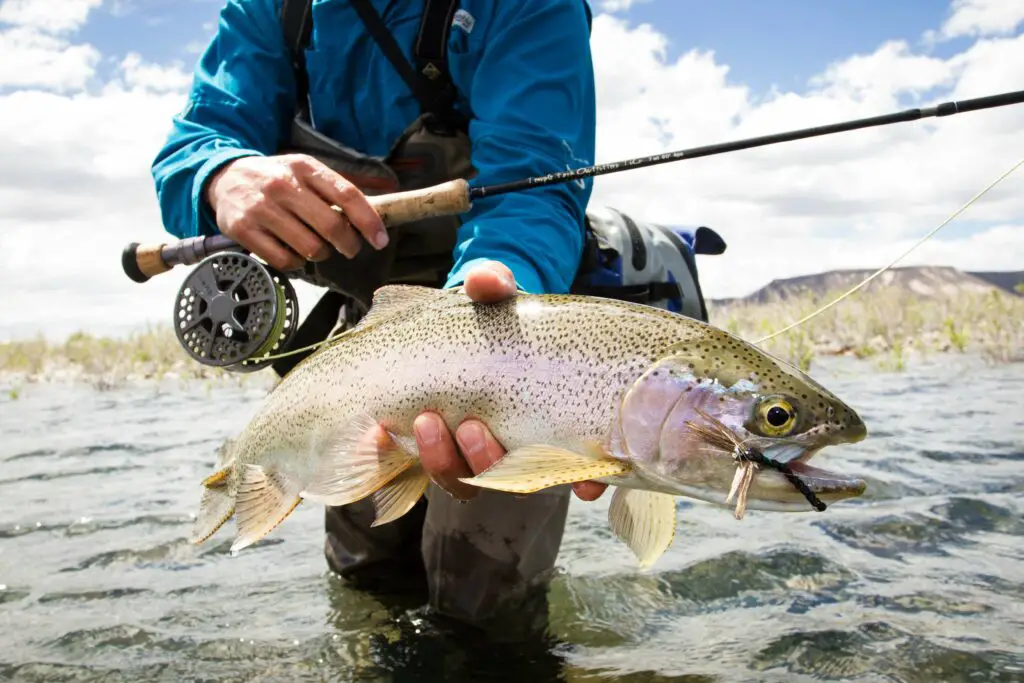
Fishing)
Day Three—Upper Collόn Curá River
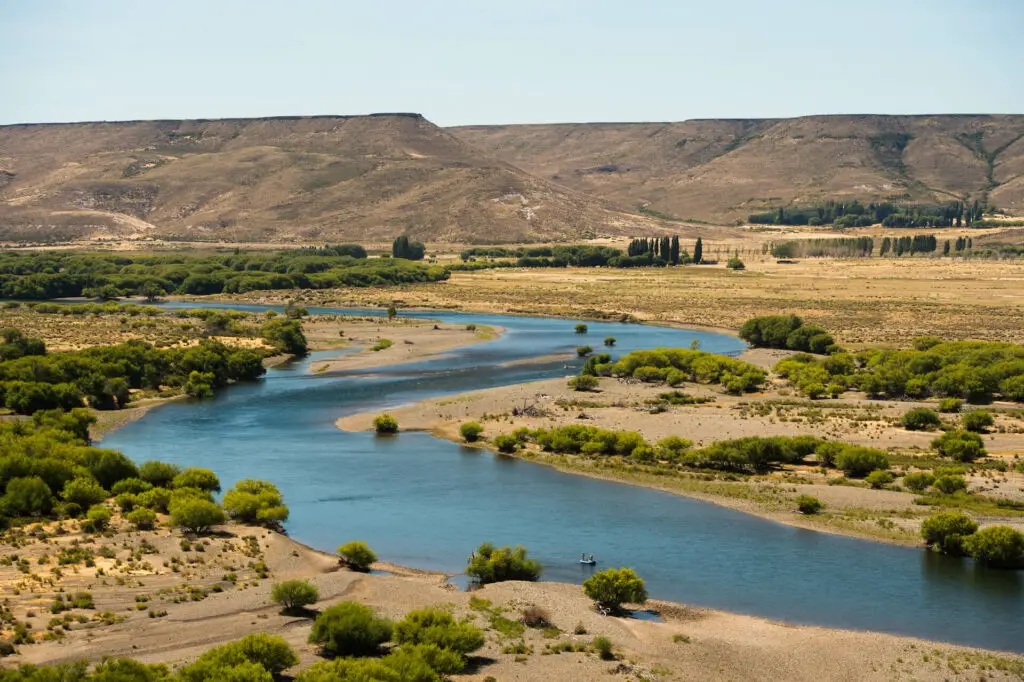
rivers near the town of Junín de los Andes. It is a big, wide, sweeping steppe-country river with
limestone bluffs featuring good-size rainbows and browns. (Photo courtesy of SET Fly Fishing)
The Collón Curá River travels through a beautiful valley from north to south and varies in width from approximately 70 to 150 feet. This is a mild gradient river and its shoreline varies from willow- lined banks and lush vegetation to wide-open stretches. With many different channels, gravel riffles, deep pools and cut banks, the Collon Cura is highly populated with both rainbows and browns. The fishing techniques vary as the season progresses. In the early season it goes from streamers to dries, in mid to late summer from dries to streamers and in the fall from streamers back to dries. Our most successful pattern was a Fat Albert foam body terrestrial we drifted and periodically twitched to get a strike.
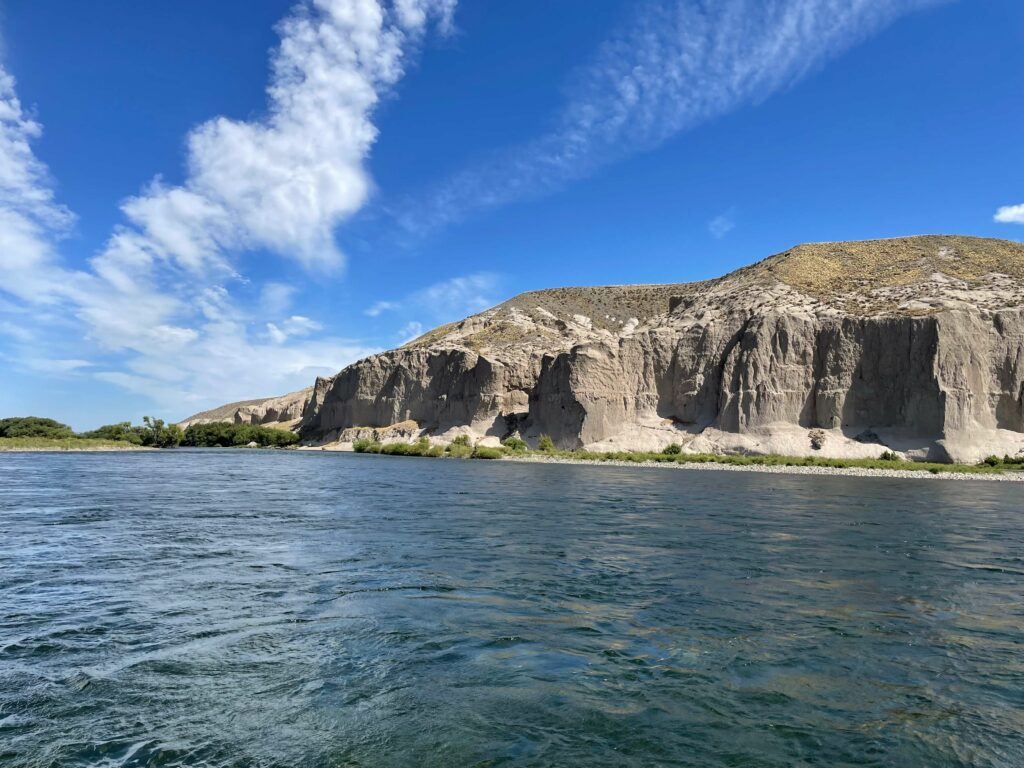
Jim Schmiedeskamp)
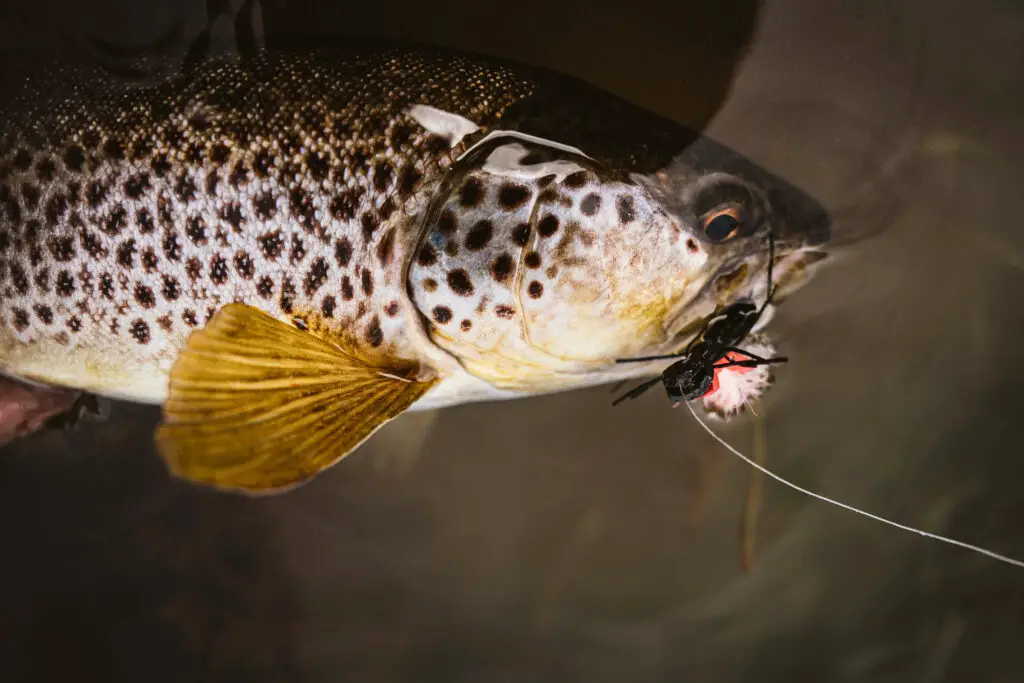
Fishing)
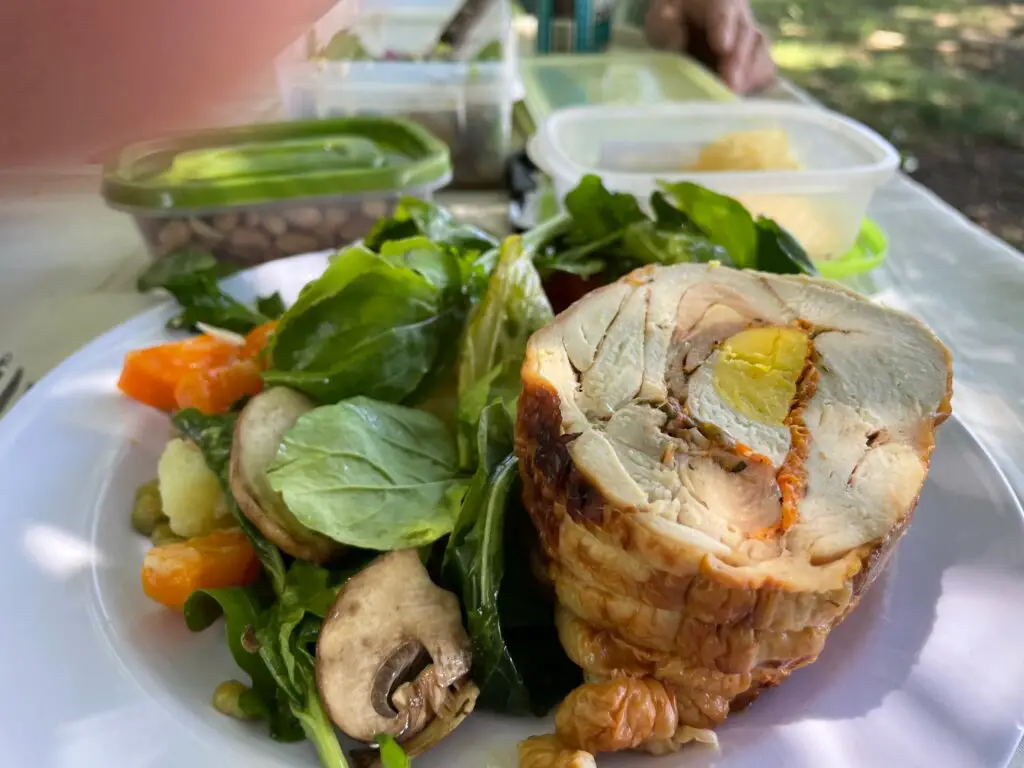
prepared by the lodge’s kitchen staff. (Photos by Jim Schmiedeskamp)
Day Four—Wet Wading the Malleo River
The Malleo River is an approachable traditional trout stream with easy wet wading. This mid-size free-stone river forms out of Lake Tromen and flows 32 miles before joining the Alumine River. The Malleo River features caddis and mayfly hatches, and lends itself to nymphing and streamer fishing if the wind picks up in the afternoon. Rainbows and browns run smaller than the trout in the larger rivers and Lake Tromen. The river features three unique sections featuring meadows, canyons and willow tree-lined banks. The day we fished the river’s lower section consisting of classic riffles and runs was a challenge without the benefit of any hatch activity.
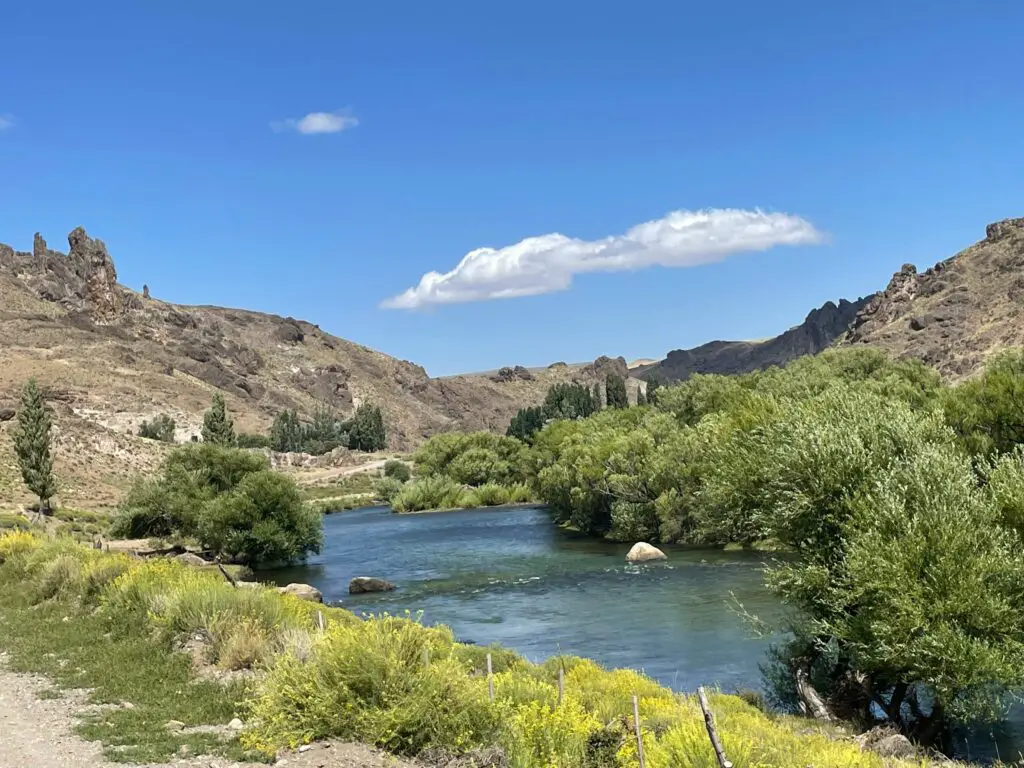
Schmiedeskamp)
Days Five and Six—Floating and Camping on the Lower Collón Curá River
Our two-day float and camping trip was on the lower Collón Cura River and covered 20 miles.
Depending on the time of the season and fishing conditions, SET Fly Fishing also does camp trips
on the Alumine and Caleufú rivers.
Another reason for river selection could be the wind and its direction during the week since the
Collón Curá runs from north to south.
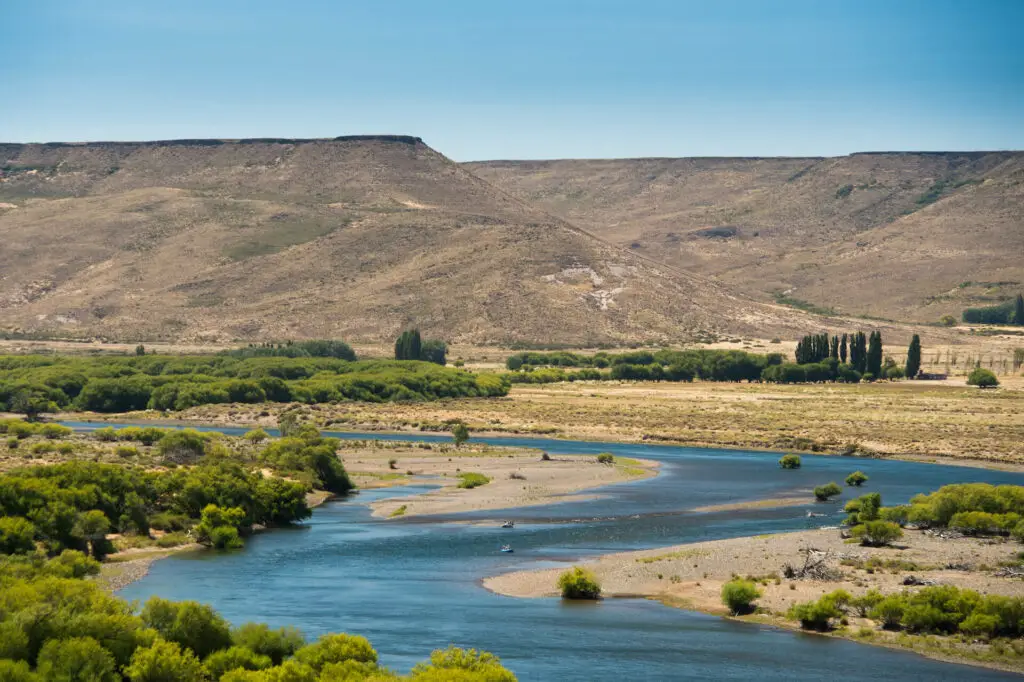
the most productive pattern. (Photo by Isaias Miciu)
The lower Collón Curá River featured plenty of cut banks which made drifting large foam attractors the most productive pattern, especially since willow trees lining the banks had already been stripped by willow worms of all foliage.
What was amazing is the concept of having this vast area to ourselves in comparison to the “guide hatches” encountered at typical launch locations on popular Western rivers like the Madison, Missouri, Green and others. The only vehicle we’d encounter each morning at the river launch sites was the one with the extra driver responsible for moving our truck and raft trailer to the takeout spot.
For our one night of camping, we arrived at the site with tents already set up and a robust wood fire underway to create the hot coals for roasting the lamb, ribeyes and vegetables for dinner. A serve-yourself bar was set up with spirits and red wine for drinks before, during and after dinner. Each angler had their own spacious two-person tent.
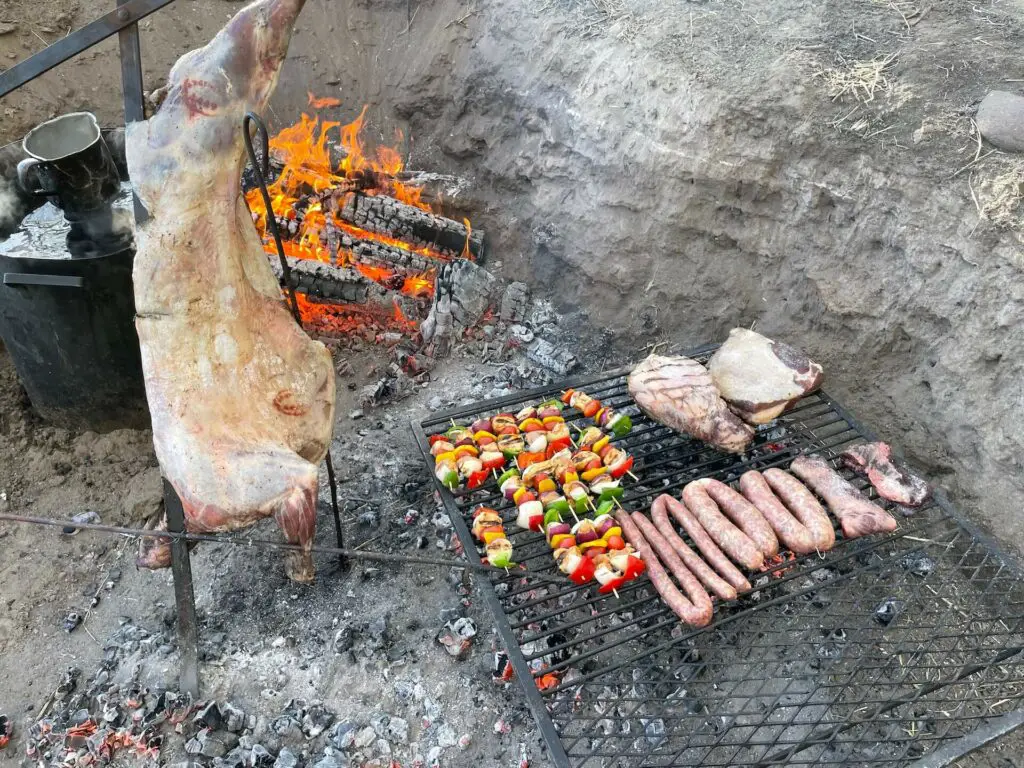
traditional Argentine barbeque. (Photo by Jim Schmiedeskamp)
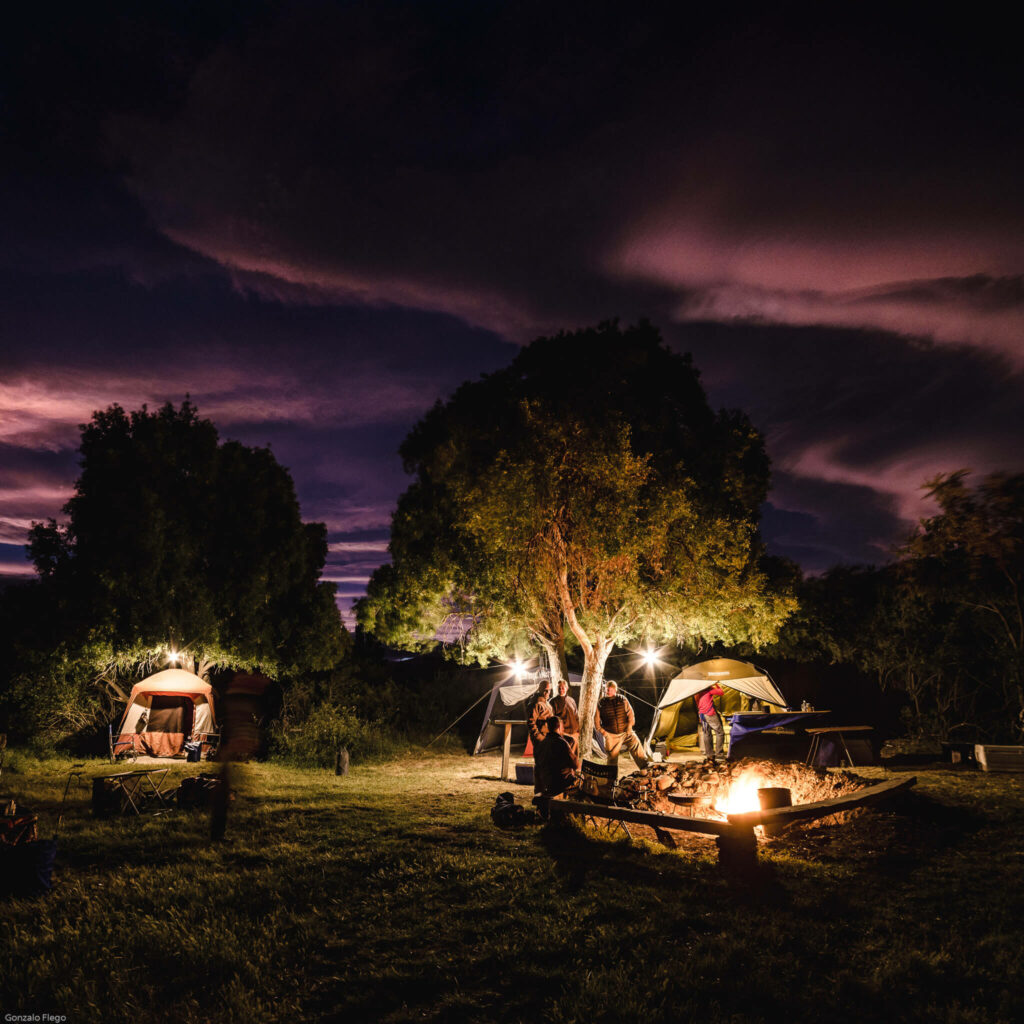
Fishing)
Day Seven—Chimehuin River
My last day fishing was on the Chimehuin River. Its origin is Lake Huechulafquen and passes by the
city of Junín de los Andes. After a course of about 33 miles, it merges with the Aluminé River to form
the Collón Curá River.
This is a classic big freestone river similar to the Madison River with pools and runs. In places, the
river braids into willow-lined channels with the feel of small water and the possibility of big fish.
Average rainbows and browns range between 15-20 inches with good numbers of fish up to 24
inches.
With no hatch activity, we relied on the dependable Fat Albert and Madame X foam bodies.
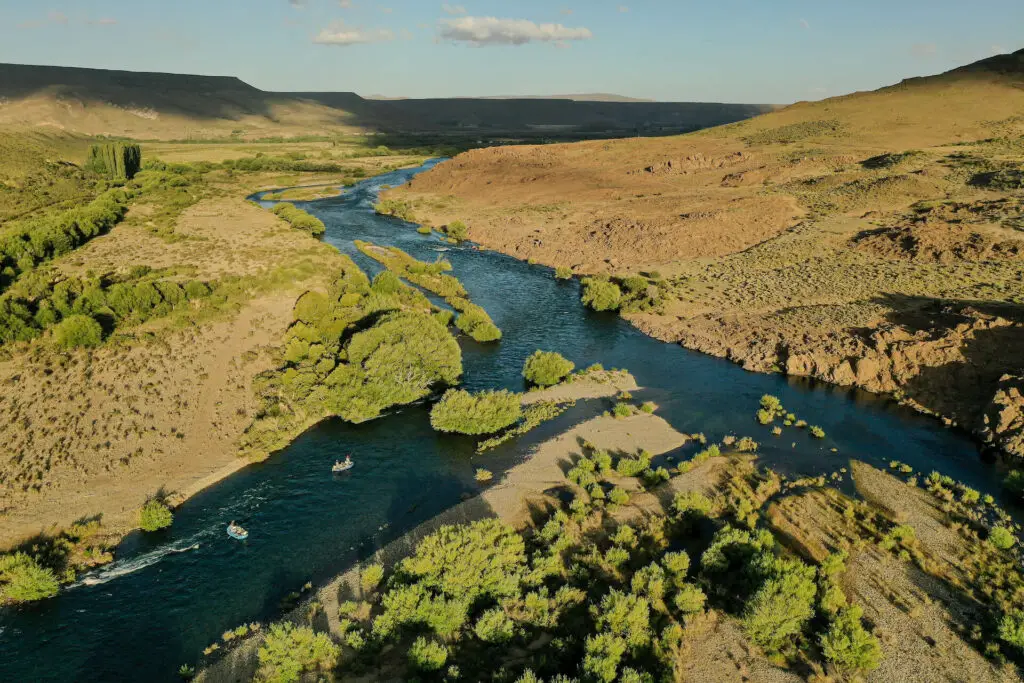
runs and braided channels. (Photo courtesy of SET Fly Fishing)
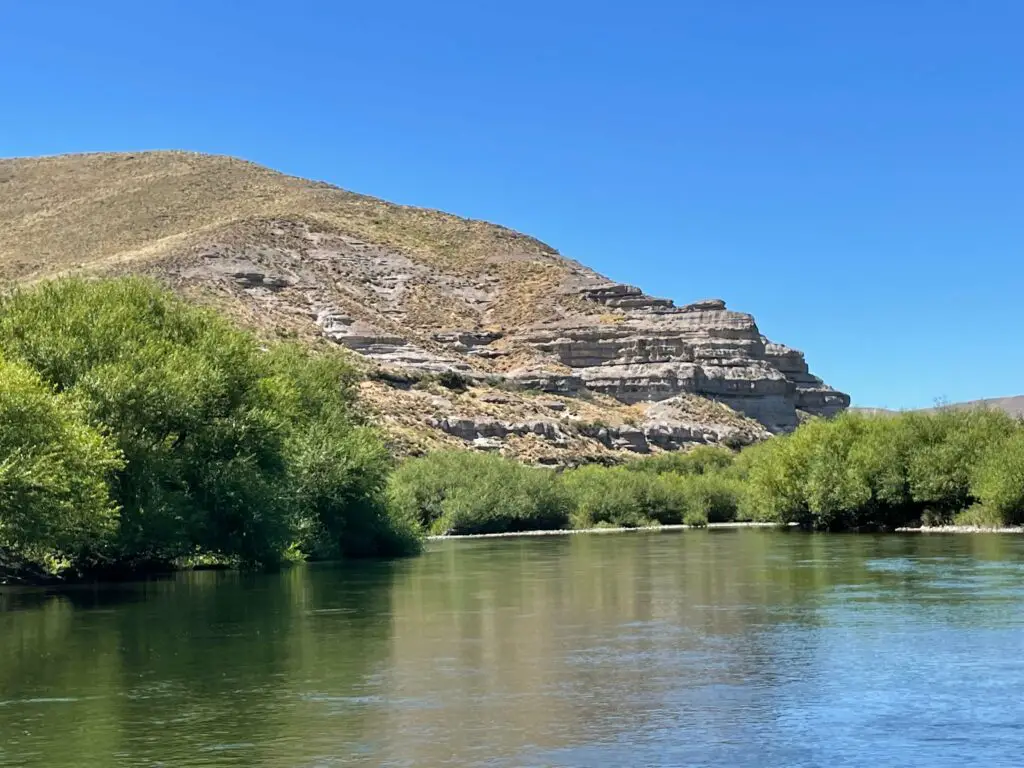
of big fish. (Photos by Jim Schmiedeskamp)
When to Go to Spring Creek Lodge Argentina
January is probably the best time to plan a trip based on the annual dragonfly hatches among the reed beds of Lake Tromen and peak activity of willow tree worms that infest river-edge willow trees overhanging the Collón Curá and Malleo rivers.
In the middle of the southern hemisphere summer, when the temperature is warmest and the hatches are starting to slow down, a very special event takes place: the annual willow worm hatch. During this hatch, trout gorge themselves on the protein-rich worms, presenting anglers with the exciting opportunity to sight-fish to trout feeding very actively on the surface. The willow worm is actually the larva of a very small wasp called a sawfly. The sawfly inserts its fertilized eggs inside the leaves of the willow trees lining the rivers of Patagonia. When the eggs hatch, the larvae begin to feed on the leaves and grow in size. Eventually, the larvae become full-grown willow worms.
The dragonfly hatch is a unique experience to see trout take a fly so aggressively and make such acrobatic jumps. While the peak of the hatch is two weeks, the whole period extends for almost five weeks. Throughout this time, the trout will keep dragonfly adults at the top of their menu. Late spring and early summer are the best times of year to fish lakes like Lake Tromen. Browns and rainbows will literally jump two feet out of the water to snatch blue dragonflies among the reeds where they lay their eggs.
In late summer and autumn, the minnows run in the Collón Curá, transforming its big, resident
brown and rainbow trout into aggressive predators that are more reminiscent of saltwater fish than
they are of your average trout.
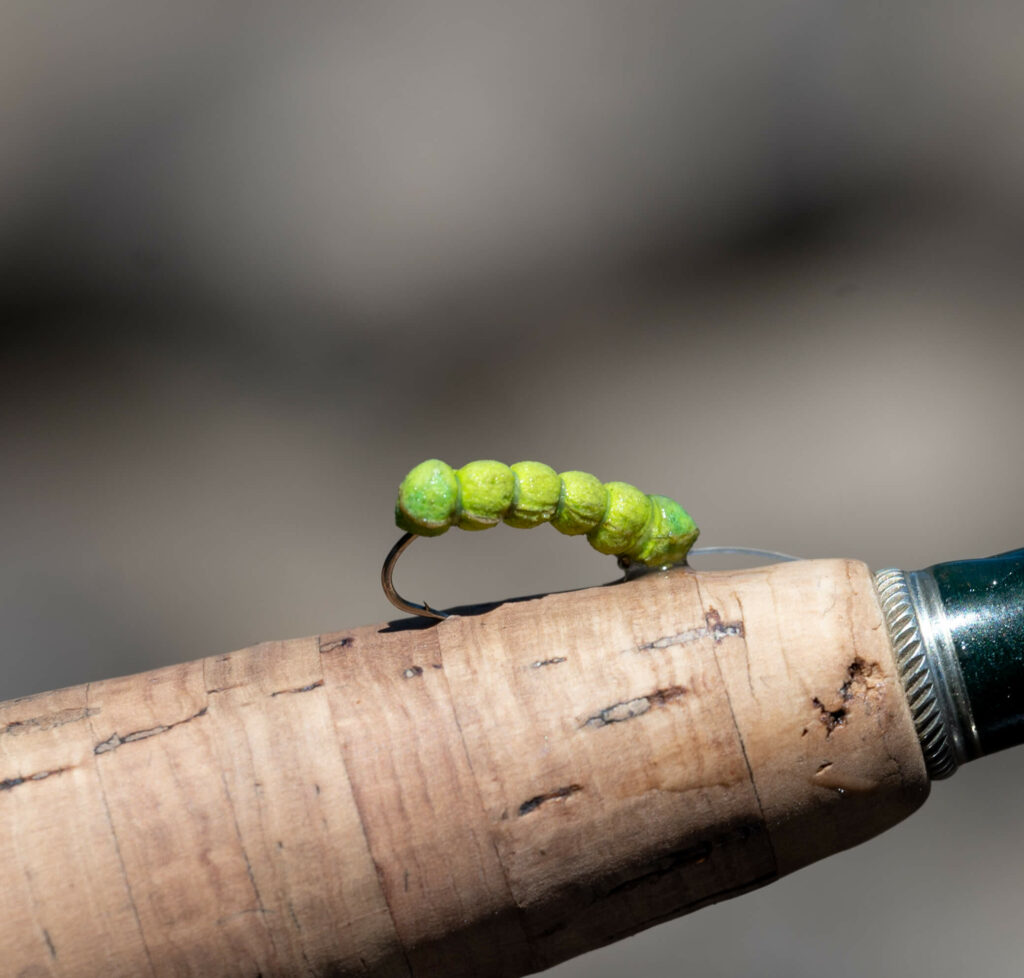
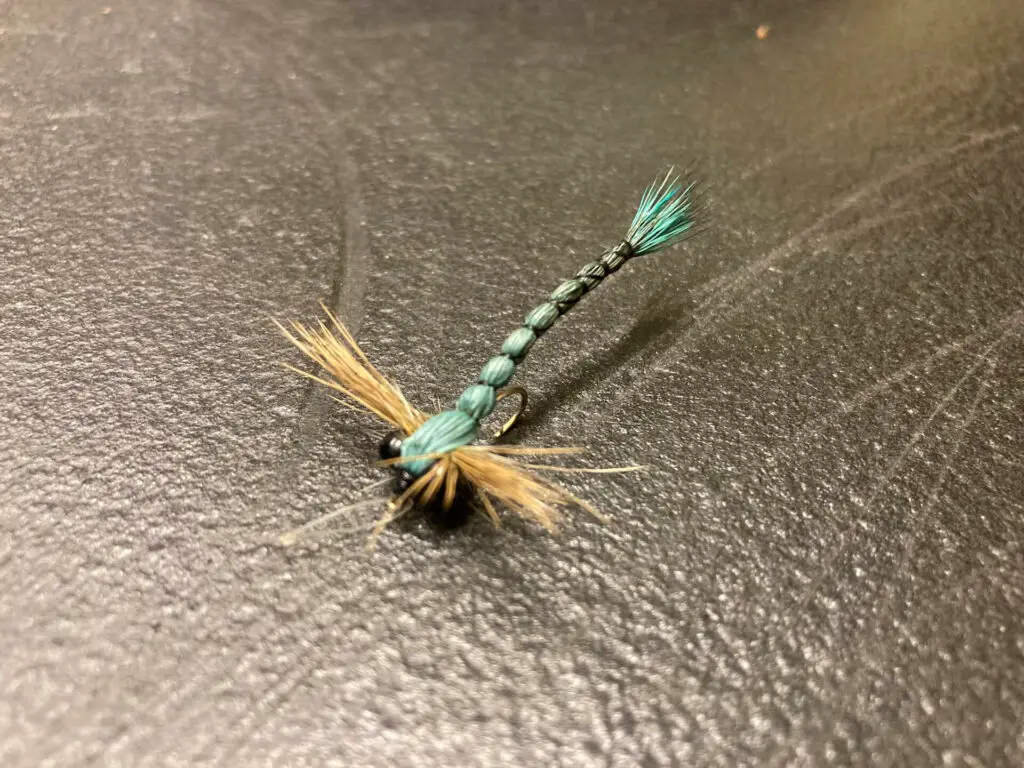
courtesy of RiverKeeper Flies. Dragonfly photo courtesy of SET Fly Fishing).
What Gear to Pack for Spring Creek Lodge Argentina
I brought both 5-weight and 6-weight outfits with floating fly line. After a morning on Lake Tromen, I used my 5-weight outfit only on the smaller Malleo River which we wet-waded. Otherwise, the larger rivers and Lake Tromen required a 6-weight outfit to contend with afternoon windy conditions. I left my waders at home as we fished all of the rivers except the Malleo from rafts and Lake Tromen from a power boat. The lodge guides provided all flies, leaders and tippet. Because of the intense sun, gloves and buffs or hooded long-sleeve shirts with UV protection are recommended. Lake and river rainbows and browns range in size from 15-24 inches. Lake Tromen brook trout range from 15-20 inches.
Birds of a Different Feather
If you enjoy seeing wildlife, especially unique birds, northern Patagonia’s rivers and steppes feature three distinct species—the ringed kingfisher, burrowing parrot and lesser rhea.
The ringed kingfisher is the largest kingfisher in the Americas, standing as large as a crow at around 16 inches compared to North America’s belted kingfisher at 12 inches. They inhabit the region’s tree-lined rivers just like in the United States.
Burrowing parrots are so named because they tunnel into sandy cliffsides to build their nests. These tunnels can be up to 10 feet deep. With green feathers and white rings around their eyes, when the birds fly, bright blue and red feathers flash in the sky . Burrowing parrots have to fly up to three hours away from their nests just to find seeds and berries to bring back to their chicks within the cliff nests.
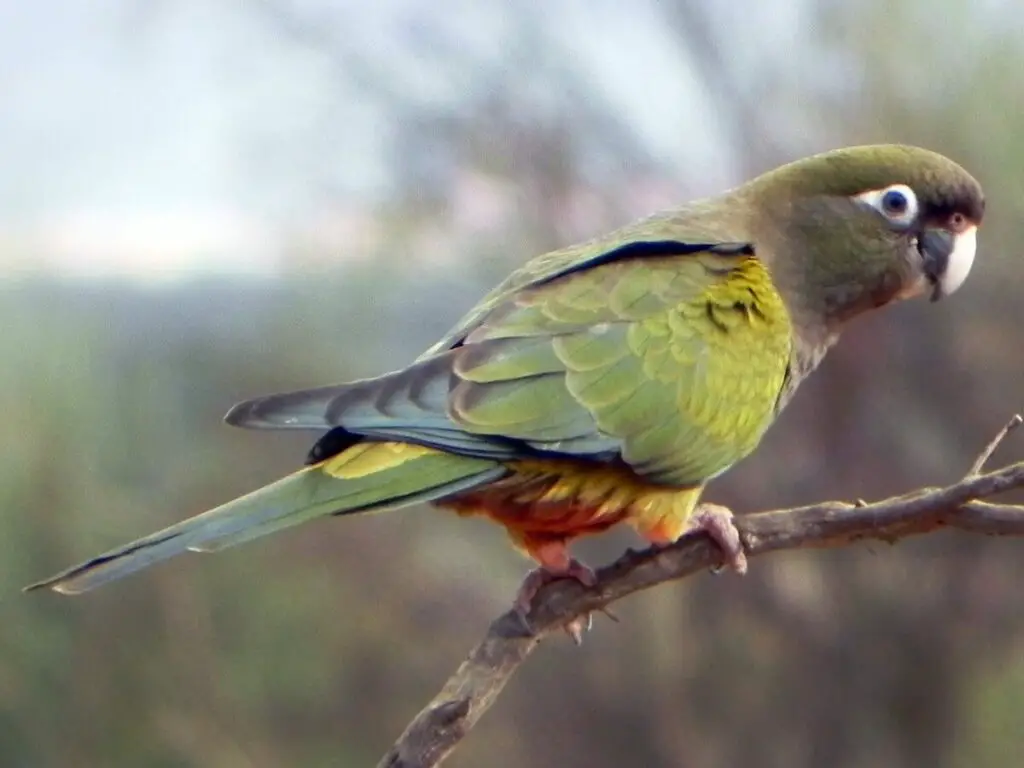
The other distinctive bird that I spotted was among the sage brush in the high desert we drove through en route to one of our river destinations. The lesser rhea, also known as Darwin’s rhea, stands at about three feet in height and weighs between 33 and 55 pounds. With the appearance of a small ostrich, it is at times referred to as the South American ostrich.
An Overview of the SET Fly Fishing Programs
Spring Creek Lodge’s central location in the famous fly fishing region of San Martin and Junín de los Andes allows for easy access to northern Patagonia’s world-class trout waters. Five of the region’s most best-known rivers, several spring creeks, and pristine mountain lakes are all a short drive from the lodge.
Casa de Campo Lodge is located two hours north of Junin de los Andes. It provides an excellent base for wade fishing the areas numerous spring creeks, the Alumine and Quillen rivers, and several mountain lakes.
The Estancia Chochoy Mallin features daily helicopter hops that take anglers to a variety of water systems including sight fishing on spring creeks, pocket water streams, and larger rivers or fishing from boats on stunning mountain lagoons.
Three lodges focus on golden Dorado with two locations on the Parana River and the other on the
western boundary of the world famous Ibera Wetlands where guests can fish “gin clear” creeks,
channels and lagoons for this combative game fish.
Spring Creek Lodge—A Five-star Experience
Ed Krall was one of nine anglers comprising our group which was primarily made up of current and former Wisconsin residents. His comments perfectly captured our group’s experience during everyone’s first trip to Argentina.
“Spring Creek Lodge is all about the people who own it—Gustavo Hiebaum and his wife Marianna,” said Krall. “They have a hands-on approach to managing their business that is apparent everywhere you look. They have impeccable taste and an astute business sense that has created a first-class operation with a well-trained, attentive staff, not to mention outstanding food and service.”
“This was my first fishing trip to Argentina,” said Krall. “What I found was uncrowded, unspoiled fishing. I mean there was nobody else on the water. Also, I much appreciated the variety of fishing experiences from floating rivers, to wade fishing, to a pristine lake where there were no small fish, including the biggest brook trout I have ever seen, not to mention caught. Lastly the guides were patient, excellent teachers.”
Krall was accompanied on the trip by his wife, and had planned another week of sightseeing Argentina with her after the week of fishing.
“What we found most appealing and unique was that the lodge catered to my wife who was not a fisher person,” said Krall. “They provided her with a customized private itinerary that included individual guides and drivers for hiking, kayaking, and sightseeing that made me, the fisherman, envious of her excursions. They also arranged for a cooking lesson with Frederico, the lodge’s chef. We even got a private tango lesson from local instructors. How many fishing lodges can provide that kind of experience?”
When Ed’s airline mishandled his checked luggage with his fishing equipment, the lodge was able to outfit him with a rod and reel along with waders until his gear showed up. Guides provided all flies, leaders and tippet, which is standard for all fishing programs.
International Trips Nothing New for the Driftless Angler Owners
Hosting fly fishing trips to international bucket list locations is nothing new for Mat and Geri who have offered summer trout trips to Fernie, British Columbia as well as winter trips to Brazil for peacock bass and Cuba for tarpon and bonefish in addition to their expanded Argentina offering.
For more information:
The Driftless Angler
Mat Wagner and Geri Meyer
Viroqua, Wisconsin
(608) 637-8779
SET Fly Fishing

